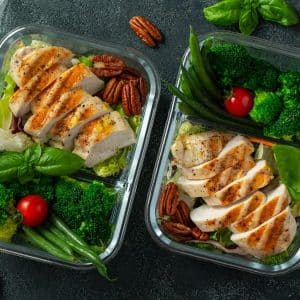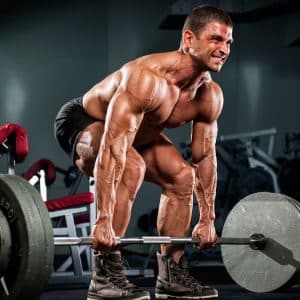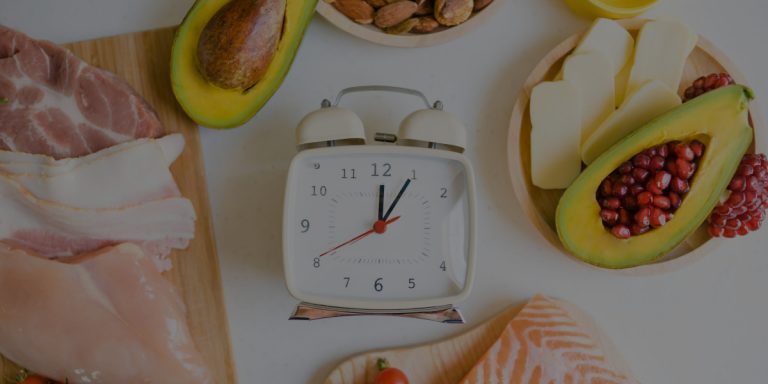Bulking Vs Cutting
When you’re aiming for defined muscle building, you’ll be working bulking vs cutting phases. Here, ultra-experienced gym enthusiast Ben Hardman defines both, so you can attack your goals with precision.
For the serious lifters, bulking and cutting is all part and parcel of the muscle building process.
It’s the strategic cycling between the bulking up and cutting down phases that allows you to maximise muscle gains and then reduce your body fat.
But knowing when to bulk, when to cut, how to adjust your training and change up your diet can be a challenge for lifters who aren’t seasoned pros.
In this guide, I’ll break down what you need to know for effective bulking and cutting cycles, to help you reach your own desired physique goals.
What Is Bulking?

Bulking simply refers to gaining body mass.
To bulk effectively, the goal is to intentionally consume more calories than you burn through your day-to-day functioning and activities. When bulking, you’ll be in a calorie surplus.
The goal of strategic bulking is to pack on as much muscle mass and strength as possible during this growth phase. By eating in a controlled surplus, the majority of weight you gain (hopefully) will be muscle. But some fat gain is expected too. You can’t really get away from this.
How much muscle you can actually build during a bulk depends on many factors:
- Genetics
- Training experience
- Size of your calorie surplus
As a ballpark figure, an intermediate lifter can expect to gain around 0.25-0.5% of their total body weight as muscle, per month.
So, for a male weighing 80 kg (176lbs), a moderate bulk would result in approximately 1-2lbs (0.5-1kg) of muscle mass gain a month. Numbers will vary based on the individual. A more aggressive bulk with a high calorie surplus could see as much as 2kg (4lbs) in mass gain per month.
What Is Cutting?
Cutting is the fat loss phase that follows after completing a bulk. The aim during a cut is to lean out and become more defined while retaining as much muscle mass as possible.
When cutting, you’ll be in an intentional calorie deficit, consuming fewer calories than your body expends daily through your BMR, activities and workouts.
For most male lifters, a moderate calorie deficit of 500 calories below daily maintenance needs will result in 0.5-1kg (1-2lbs) of fat loss per week. The number on the scale may decrease faster than this in the beginning due to drops in glycogen stores and water weight.
It’s important to be patient during a cut to make sure you retain your hard-earned gains and keep in a good place mentally.
When Is The Best Time To Bulk?
The traditional and most common time for lifters to bulk is during the autumn and winter months. Bodybuilders and serious gym goers take advantage of this ‘bulking season’ to pack on extra mass.
There are a few reasons why the colder winter months are ideal for bulking:
- Colder weather is perfect for bulk foods like stews, casseroles, hearty comfort foods and carbs. All good fuel for heavy lifting.
- The festive season is particularly full of calorie-heavy meals and treats. Although not the healthiest of foods, they do make sustaining a calorie surplus easier.
- Conveniently hide any added body fat underneath loose sweaters and bulky jackets.
Aside from the time of year, a bulk will depend on your current muscle mass and body fat levels. You don’t want to start a bulk if you’re already carrying too much body fat. As a rule of thumb, a good body fat level to start a bulk is between 10-15% for men and 15-25% for women.
During an intensive bulk, top-level bodybuilders may aim to gain an incredible 10-20kg or more.
For most regular gym goers, a more sustainable target is around 2-7kg (5-15lbs) of total weight gained over a 12–20-week bulking phase.
Of course, there are different variations when it comes to bulking. Those especially worried about gaining excessive fat can do a ‘clean bulk’ by eating just slightly above maintenance calories. With a clean bulk you’ll focus on lean proteins, complex carbs, healthy fats and vegetables.
On the more extreme end, you may choose to go down the ‘dirty bulk’ route. This is where you eat anything and everything in sight without much regard for nutrition quality or calories. This can certainly pack on size fast but will also pile on a tonne of fat that needs dieting off later.
For me, a clean or moderate-to-clean bulk wins every time. A dirty bulk sounds fun in theory, but it soon gets tiring, it’s not particularly healthy, and it doesn’t make you feel great. That said, do what aligns with your goals and preferences.
When Should You Cut?

The ideal time for most lifters to switch into a dedicated cutting phase is in the early spring. The weather’s getting warmer and there’s a sprightly freshness of change in the air.
This ties into the traditional bodybuilder season where pros start to prepare for competitions beginning in the late spring and extending through summer. The idea with a spring-time cut is to prime you up to hit top shape for the summer when more flesh is on show and the holidays are booked in.
But in reality, you can start a cut anytime you feel you’ve gained too much fat from a bulk and want to lean out. The number on the scale and your appearance in the mirror will give you clear signals when it’s time to cut.
In terms of fat levels, the best place to start a cut is around 15-20% body fat for men and 20-30% for women.
Personally, I don’t like my body fat levels going much beyond 15%. If they do, I’ll schedule in a cut phase to try and drop my body fat to around 10%.
Should You Incorporate Mini Cuts?
One strategy used by experienced lifters who want to prolong their bulks is to incorporate a short ‘mini cut’.
Mini cuts are brief and quite aggressive fat loss phases sprinkled in between longer muscle building periods. A typical mini cut may last between 2-6 weeks on average.
There are thought to be many benefits to a mini cut. They:
- Help to keep your body fat on the lower side, so you have less to lose during your main cut
- Prolong the amount of time you can be in a muscle building phase
- Provide mental relief and variety from heavy eating (it can get tiresome!)
- Act as a reset for your body and metabolism before re-entering a mass gain phase
I’m personally a big fan of mini cuts and feel they can almost always enhance an extended bulking phase when applied strategically.
How Should Bulking And Cutting Training Differ?

A common question surrounding bulking and cutting cycles is whether your training style and workouts should change significantly between mass gaining and fat loss phases.
The first answer is that your training doesn’t necessarily have to change. As long as you’re feeling good and not in a muscle building plateau, your programming can remain relatively the same and you can bulk or cut purely on the calories you consume.
However, I prefer to tailor my training depending on the phase I’m in.
When actively bulking and aiming to build mass, it’s beneficial to be in a progressive overload. This lends itself well to lifting heavy weights across lower rep ranges like 5-8 reps per set on the big compound exercises. Getting stronger facilitates getting bigger.
On the flip side when cutting, you want to retain strength and muscle while shedding fat in a calorie deficit. Lifting very heavy regularly can be taxing here when energy levels will already be reduced.
For cutting, consider keeping rep ranges between 8-15 reps while reducing your max weights slightly. Training heavy and with compounds is still important, but you’ll want to put a little more emphasis on maintaining training intensity and hitting volume so you can maintain muscle and drop body fat.
Accessory work, such as higher rep isolation exercises, can make up for slightly lower weights and help sculpt your muscles for the big reveal as your body fat decreases.
Wrap Up On Bulking Vs Cutting
When done correctly, going through bulking and cutting cycles is the most effective way to maximise muscle growth and achieve low body fat levels over the long term.
With commitment and consistency through both stages, it’s possible to make impressive body composition improvements to hit your specific goals.








